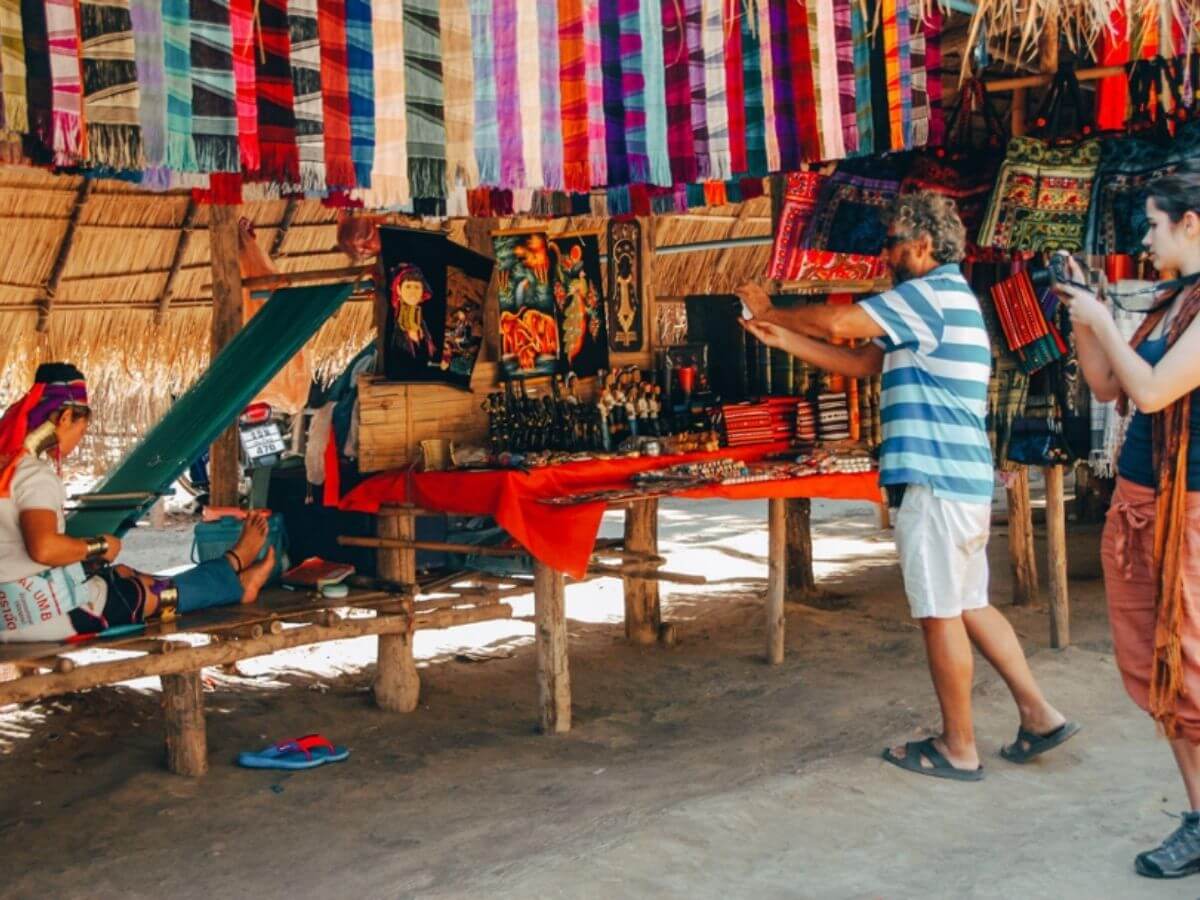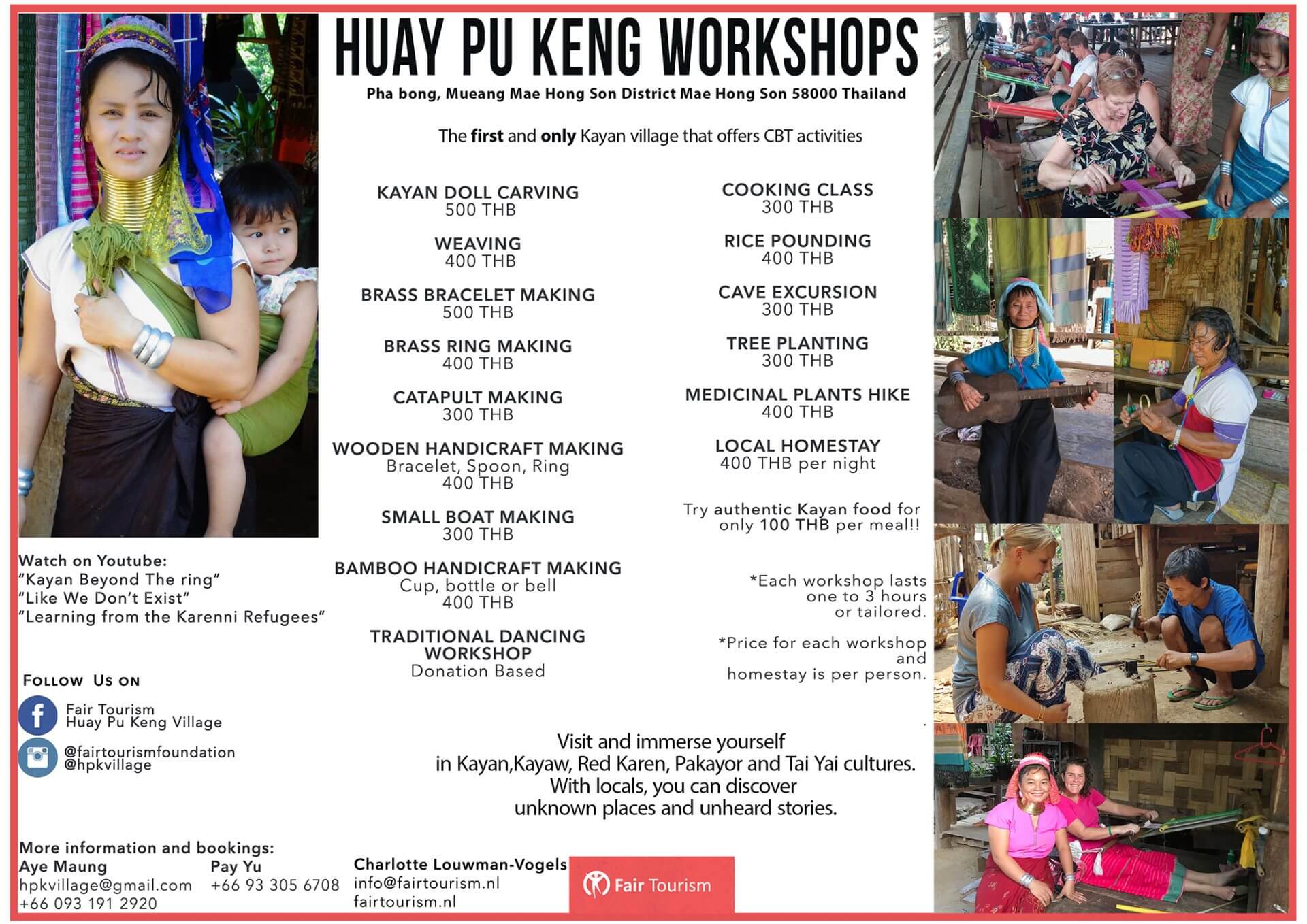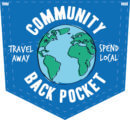Table of contents
Benefits of Community Based Tourism
How CBT reduces tourism leakage
How to book CBT
Fair Tourism Foundation
Community based tourism (CBT) as a solution for tourism leakage
Many countries nowadays see tourism as a major export product and they can highly benefit from it. However, in many cases, countries are not benefitting as much as they could, because of economic leakage. As a reader of Community Back Pocket, you probably already know what tourism leakage is. But, let me quickly explain for the ones who don’t know yet. Tourism leakage means that money that flows into the country through tourism, leaks out from the local economy. There are several reasons why this can happen, but some examples are foreign-owned businesses (yes, this could also be your hotel or souvenir shop) and imported products. There are many benefits of Community Based Tourism, minimising tourism leakage is just one.
A solution – benefits of Community Based Tourism
There are many ways in which you can contribute to the reduction of tourism leakage, but if you want to have a large impact, I would recommend you to change the way you travel and to start visiting Community Based Tourism (CBT) projects.
CBT is a type of tourism that centres around local encounters. Tourists can visit a CBT project where they can engage with locals and learn about their local ways of life. Often, tourists can participate in several workshops organised by the community. More importantly, this type of tourism is owned by the community and for the community, which means that the locals have all the decision-making power and that the income stays within the community.

Why CBT reduces tourism leakage and stimulate the local economy – the benefits of community based tourism:
Here are four reasons why CBT reduces tourism and leakage, the benefits of community based tourism and how it can stimulate the local economy:
1. CBT is owned by the community
One of the most important factors of CBT is that it is owned by the community which means that there are no outsiders that get a share of their profits. The community can decide by itself how the profits will be divided and often a part of the income is contributed to a so-called community fund. From this fund, local projects can be financially supported. Examples hereof are projects regarding education and health care. In this way, not only the people who directly or indirectly gain from tourism through their jobs, but also the other community members can benefit.
2. CBT focuses on local experiences
One of the first things that is often mentioned when talking about reducing tourism leakage is to buy locally. Whether it would be a tour or the products you buy, as long as you buy products or services that are locally created and sold, most of the money will stay in the destination. Visiting a CBT project will give you the most local experience you can get. For their daily lives, communities will make use of local products and these same products will be used for the workshops. Think of locally sourced produce for your meal or local bamboo to make your own bamboo cup.
3. CBT offers opportunities for an extended stay
Villages in which you can find CBT often have multiple activities on offer that you can undertake. This is in contrast with regular village visits where tourists only stop to take photos and maybe have some food. By offering a wide range of activities, tourists have the possibility to stay longer in the village which means that their expenditure is also highly likely to increase. This gives an extra boost to the local economy, especially because this money is spent locally and therefore stays in the destination.
4. Spending locally stimulates the multiplier effect
Our last reason is true for every spending that is done locally, but definitely also is true for CBT. When spending locally, the multiplier effect can occur. The multiplier effect entails reinvestment in the local economy. When the receivers of tourism money spend that money again inside the destination, the money keeps on circulating in the local economy. There are three ways in which this can happen: directly, indirectly and induced. First of all, direct ways include the expenditure of tourists on accommodation, tours, food, etc. Indirect spendings, on the other hand, occur from the transactions between businesses to accommodate for the tourists wishes. Think of hotels spending money buying local produce or laundry shops that are used to wash the bed linen. Lastly, induced spending comes from the income of people that benefit directly from tourist expenditures. When these people spend their money locally as well, the extra money keeps on circulating in the local economy.
Do I need to book my CBT experience locally?
Often, it is recommended to book directly with the provider of the tourism product or to book through local agents (including local booking sites), and, indeed, this is most often the best option, because no commission fee is taken from the community. However, not all external organisations ask for a commission fee from the community and by booking through some of these organisations, you could actually contribute to further CBT development in other communities because they support charities or invest in CBT development themselves. Therefore, booking through an external organisation is possible as long as you know how they will spend your money.
Be aware:
When booking your trip, be aware that not every community visit is automatically a visit to a CBT village. As mentioned earlier in the article, the focus of CBT is on local encounters, dignity, and equality. Tours, where you are being taken to a village just to witness (and photograph) other people’s lives, is not CBT.
First of all, because there is no equality in such visits. The tourists enter the village at a moment of their liking and treat the villagers as photo objects. This might not be intentional, but through the way certain tours are organised, this could occur. Imagine yourself working in your village and being photographed without being asked for your consent or even having had a simple conversation. That would feel rather intruding, right? We usually call such phenomenons “show villages” and this is exactly what CBT is trying to counter. These show villages are no fun experience for neither the villager nor the tourist as most of the tourists also feel uncomfortable during these tours.

Secondly, without any contact or conversations, the entire aspect of cultural exchange and learning about each other’s way of life is lost. CBT is about meeting each other and creating meaningful encounters that can inspire you for the rest of your life as well.
Continue to be aware:
Lastly, some of the tribes that you are visiting might actually be exploited by businessmen which means that they are hardly benefitting from your visit. An interesting example hereof is the village of Huay Pu Keng, whom we are supporting in Thailand. Before the assistance of Fair Tourism, the village used to be a show village where no interaction between locals and guests was taking place. Reviews went from calling it exploitation to complete monkey business as well as a show for tourists. There was not much to do in the village. Tourists had to pay an entrance fee upon arrival and after that, they were free to roam the village and watch the community do their daily activities. There were some stalls where the tourists could buy souvenirs, but that was all. Part of that entrance fee would be for the community, but another part would be for the businessmen. Thus, a visit to Huay Pu Keng definitely did not reach its potential to bring maximum benefits to the community (more information about the transition of Huay Pu Keng towards CBT can be found on our website:www.fairtourism.nl).

Therefore, we would strongly advise you to do your research before visiting a local community and ask yourself the question:who is benefitting from this?Once you are certain that it is the community that is benefitting, you are good to go. Immerse yourself in the transformative experience that CBT is and enjoy it to the fullest. All in all, you are going to participate in a form of tourism that creates memorable encounters and experiences. And best of all: through CBT you can prevent your money from leaking out of the destination!

Fair Tourism
This article was brought to you by Fair Tourism. By writing this article, we hope to inspire you to also visit a CBT project during your travels. In Thailand, we assist the village of Huay Pu Keng with their transition towards CBT, and in the image below you can find more information about the workshops that are offered there. They can also serve as a source of inspiration for when you are looking for CBT-related activities in another destination.
For more information about Fair Tourism, you can have a look at our website, or connect with us on Facebook, Instagramand LinkedIn.

